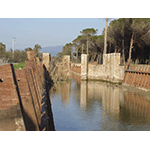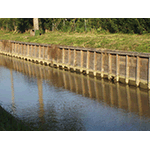Reclamation of Vada
A large part of the coastal area of Upper Maremma has always had a precarious hydro-geological equilibrium. Moreover, as of the 13th century, various factors led to a progressive and growing transformation into swampland: a relentless depopulation of the area due to the many struggles caused by complex political affairs, the decline of the old marine landing at Vada, the abandon of the coastal salterns, the recurrent flooding of the Cecina River and of the Tripesce canal and the fact that several areas were, from the altimetric viewpoint, below sea level. This situation remained substantially unchanged until the 18th century.
In 1771, Grand Duke of Tuscany Peter Leopold of Lorraine visited the area to personally appraise the situation, and started laying the bases for the successive reclamation projects. Following a period of inactivity, the issue was newly confronted by Grand Duke Leopold II of Lorraine from 1828 to 1848. Numerous technical solutions were adopted to solve the problem: fills (that is to say, filling up with sediments); moving the beds of watercourses to avoid feeding the swamp (such as, for example, moving the Tripesce in 1839), at the same time realising a fill; the excavation of new canals equipped with floodgates which flowed towards a single canal (the Molino a Fuoco Canal); and finally, the innovative and decisive technique of mechanically drying the area using pumps activated by a costly steam-operated machine, built in the foundry of Guglielmo Hoppner in Livorno. Increasing the pine forests to protect the reclaimed lands, and installing new and more powerful draining machines made it possible to progressively complete the work in the course of the 1930s.
Today, the water that arrives from the countryside is collected in canals and pumped by motor-driven pumps which, every time the established limit is surpassed, conveys the water to the sea by means of a short canal in masonry. The management and maintenance of the reclamation works is today conducted by the Consorzio di Bonifica delle Colline Livornesi, a public law authority instituted in 1999 by the Regional Council of Tuscany.
****************************
Texts by Graziano Magrini
English translation by Victor Beard
Last update 23/gen/2008





